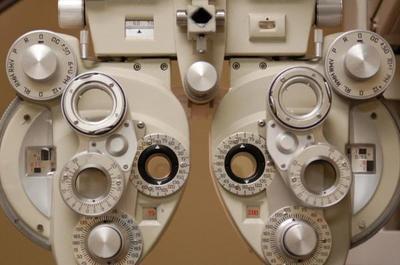Comprehensive Eye Exams
 An eye exam consists of more than just checking to see if you need glasses. During a complete eye exam, we not only determine your prescription for glasses or contact lenses, we also assess your eyes’ ability to work together as a team (binocular vision), check for eye diseases such as glaucoma, cataract, and macular degeneration, and evaluate for eye signs of systemic disease such as diabetes, high blood pressure, even brain tumors. Adults and children should have regular eye exams to keep prescriptions current and to check for early signs of eye diseases. Early detection can prevent vision loss. Below is a list of a few eye diseases and conditions that we look for during a complete eye exam:
An eye exam consists of more than just checking to see if you need glasses. During a complete eye exam, we not only determine your prescription for glasses or contact lenses, we also assess your eyes’ ability to work together as a team (binocular vision), check for eye diseases such as glaucoma, cataract, and macular degeneration, and evaluate for eye signs of systemic disease such as diabetes, high blood pressure, even brain tumors. Adults and children should have regular eye exams to keep prescriptions current and to check for early signs of eye diseases. Early detection can prevent vision loss. Below is a list of a few eye diseases and conditions that we look for during a complete eye exam:
- Refractive error — This is your eyes' "optical" prescription. There are 3 types of refractive error, myopia (nearsightedness), hyperopia (farsightedness), and astigmatism. These conditions can be corrected with glasses, contact lenses and refractive surgery.
- Amblyopia — Amblyopia is poor development of central vision as a result of a turned eye or a large asymmetry in refractive error. If untreated, amblyopia can slow visual development of the affected eye, which can lead to permanent vision loss.
- Strabismus — Strabismus is an eye that turns inwards or outwards relative to the other eye. If left untreated, a strabismus can lead to amblyopia, and decrease depth perception.
- Glaucoma — Glaucoma is the degeneration of the optic nerve (a nerve tract that connects the eye to the brain) often associated with high eye pressures. During a comprehensive eye exam, we perform numerous tests that tell us whether or not you have glaucoma. Because there are virtually no symptoms, it is important to have regular eye exams to prevent permanent vision loss.
- Macular degeneration — Macular Degeneration is a disease that affects the small "sweet spot" of the retina critical for acute central vision tasks such as reading, driving, and watching television. A comprehensive examination can detect the condition in its early stages.
- Cataracts — A cataract is a clouding of the unseen crystalline lens which rests just behind the colored part of the eye.
- Systemic diseases — A comprehensive eye exam can detect early signs of many systemic diseases including diabetes and high blood pressure.
- Dilation — Eye drops are often used for a full view of the eye's interior but new instrumentation allows advanced imaging without the aid of dilation.
